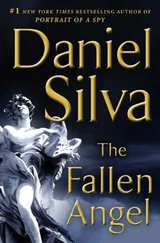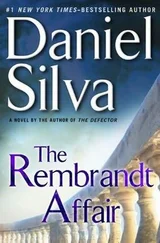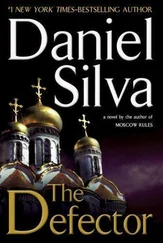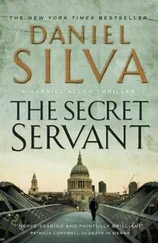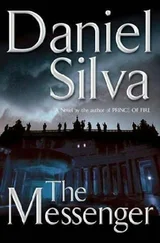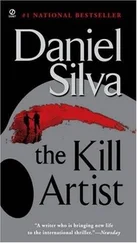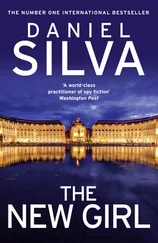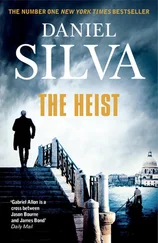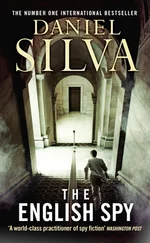One month after convening, the commission submitted its first request for documents to the Secret Archives. Among the items contained in the initial batch was a memorandum written by Bishop Sebastiano Lorenzi of the Secretariat of State to His Holiness Pope Pius XII. The memo, once thought destroyed, contained details of a secret meeting that took place at a convent on Lake Garda in 1942. Members of the commission, true to the guidelines, said nothing about it in public.
The Pope's initiative was quickly overshadowed, however, by what became known in the Italian press as the Crux Vera affair. In a series of incendiary exposes, Benedetto Fó, the Vatican correspondent for La Repubblica, revealed the existence of a secret Catholic society that had infiltrated the highest levels of the Holy See, the Rome government, and Italy's financial world. Indeed, according to Fó's shadowy sources, the tentacles of Crux Vera reached across! Europe to the United States and Latin America. Cardinal Marco* Brindisi, the slain Vatican secretary of state, was named as leader of Crux Vera, along with the reclusive financier Roberto Pucci and the former chief of the Vatican Security Office, Carlo Casagrande. Pucci issued a denial of the accusation through his lawyers, but not long after Fó's article appeared, a Pucci-owned bank suffered a liquidity crisis and collapsed. The bank failure revealed the Pucci empire to be a financial house of cards, and within weeks it was a smoldering ruin. Pucci himself fled his beloved Villa Galatina and took up exile in Cannes.
As for the Vatican, publicly it clung to its theory that the gunman who wreaked havoc was a religious madman with no ties to any country, terrorist organization, or secret society. It strenuously denied the existence of a clandestine group called Crux Vera and reminded the Vaticansti at every turn that secret societies and lodges were strictly forbidden by the Church. Still, it soon became apparent to the press corps and all those who followed Vatican affairs that Pope Paul VII was in the process of cleaning house. More than a dozen senior members of the Roman Curia were reassigned to pastoral duties or were retired, including the doctrinaire head of the Congregation for the Doctrine of the Faith. Following the appointment of a replacement for Marco Brindisi, there were wholesale staff changes in the Secretariat of State. Press office chief Rudolf Gertz returned to Vienna.
Ari Shamron monitored Gabriel's recovery from Tel Aviv. Against Lev's wishes, Shamron managed to tunnel his way back into King SauL Boulevard to head up what eventually became known as Team Leopard. The sole purpose of the group was to locate and neutralize the elusive terrorist thought to be responsible for the murder of Benjamin Stern and countless others. Shamron seemed rejuvenated by the new assignment. Those closest to him noticed a marked improvement in his appearance.
Unfortunately for those drafted onto his team, better health brought the return of his fiery temper, and he drove himself and his underlings to the point of exhaustion. No lead, no piece of gossip,
was deemed too small to ignore. There was a suspected sighting of the Leopard in Paris and another in Helsinki. There was a report that Czech police suspected the Leopard was behind a murder in Prague. His name surfaced in Moscow in connection with the murder of a senior intelligence official. An Office agent in Baghdad heard rumors that the Leopard had just signed a contract to work for the Iraqi secret service.
The clues were tantalizing, but eventually they all proved fruitless. In spite of the setbacks, the old man pleaded with his team not to lose faith. Shamron had his own theory about how the Leopard would be found. It was money that fueled him, Shamron told his team, and it would be money that would bring him down.
One warm evening in the last days of May, a soccer ball bounded toward Gabriel as he walked in the Campo di Ghetto Nuovo with Chiara. He released her hand and lunged toward the moving ball with three swift steps. "Gabriel! Your head!" she shouted, but he did not listen. He drew back his foot and met the ball with a solid thump that echoed off the facade of the synagogue. It sailed through the air in a graceful arc and landed in the hands of a boy, about twelve years old, with a kippah clipped to his head of curly hair. The child stared at Gabriel for a moment, then smiled and ran off to rejoin his friends. Returning home, Gabriel telephoned Francesco Tiepolo and told him he was ready to go back to work.
HIS PLATFORM was as he had left it: his brushes and his palette, his pigment and his medium. He had the church to himself. The others--Adriana, Antonio Politi, and the rest of the San Zaccaria team--had completed their work and moved on long ago. Chiara never left the church while Gabriel was inside. With his back to the door, framed by the majestic altarpiece, he made an inviting target, so she sat at the base of his scaffolding while he worked, her dark eyes fixed on the door. She made only one demand--that he remove the shroud--and uncharacteristically he agreed.
He worked long hours, longer than he would have preferred under normal circumstances, but he was determined to finish as quickly as possible. Tiepolo stopped by once a day to bring food and check on his progress. Some days he would linger for a few minutes to keep Chiara company. Once he even hauled his lumbering frame up the scaffolding to consult with Gabriel on a difficult section of the apse.
Gabriel worked with renewed confidence. He had spent so much time studying Bellini and his works that some days he could almost feel the presence of the master standing next to him, telling him what to do next. He worked from the center outward--the Madonna and child, the saints and the donors, the intricate background. He thought about the case in much the same way. As he worked, he was troubled by two questions that ran incessantly through his subconscious. Who had given Benjamin the documents on the Garda covenant in the first place? And why?
ONE AFTERNOON late in June, Chiara looked up and saw him standing on the edge of the scaffolding, right hand on his chin, left hand supporting his right elbow, head tilted slightly down. He stood motionless for a long time, ten minutes by Chiara's watch, his eyes traveling the length and breadth of the towering canvas. Chiara took the scaffolding in hand and shook it once, the way Tiepolo always did. Gabriel looked down at her and smiled.
"Is it finished, Signor Delvecchio?"
"Almost," said he distantly. "I just need to talk to him one more time."
"What on earth are you talking about?"
But Gabriel made no reply. Instead, he knelt down and spent the next several minutes cleaning his brushes and palette and packing away his pigments and medium in a flat rectangular case. He climbed off the scaffolding, took Chiara by the hand, and walked out of the church for the last time. On the way home, they stopped by Tiepolo's office in San Marco. Gabriel told him that he needed to see the Holy Father. By the time they arrived home in Cannaregio, a message was waiting on the answering machine.
Bronze Doors, tomorrow evening, eight o'clock. Don't be late.
Gabriel crossed St. Peter's square at dusk. Father Donati met him at the Bronze Doors. He shook Gabriel's hand solemnly and remarked that he looked much better than he had the last time they had met. "The Holy Father is expecting you," Father Donati said. "It's best not to keep him waiting."
The priest led Gabriel up the Scala Regia. A five-minute walk along an~archipelago of looming corridors and darkened courtyards brought them to the Vatican Gardens. In the dusty sienna light it was easy to spot the Pope. He was walking along a footpath near the Ethiopian College, his white soutane glowing like an acetylene torch.
Читать дальше

